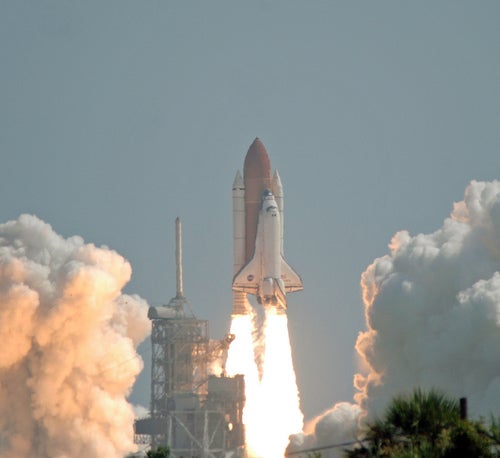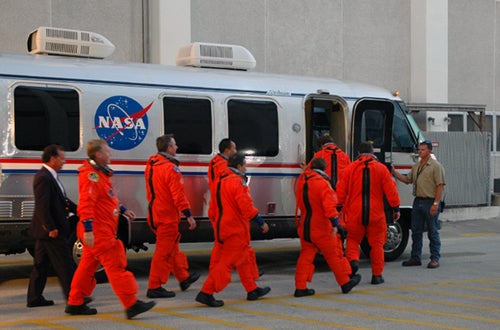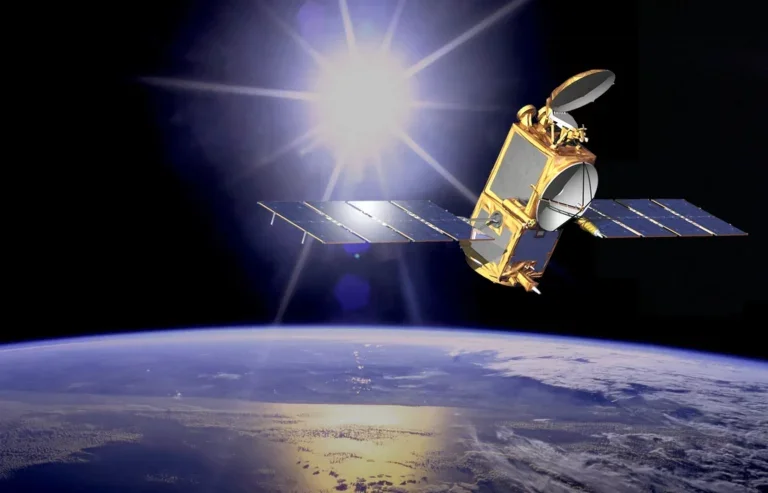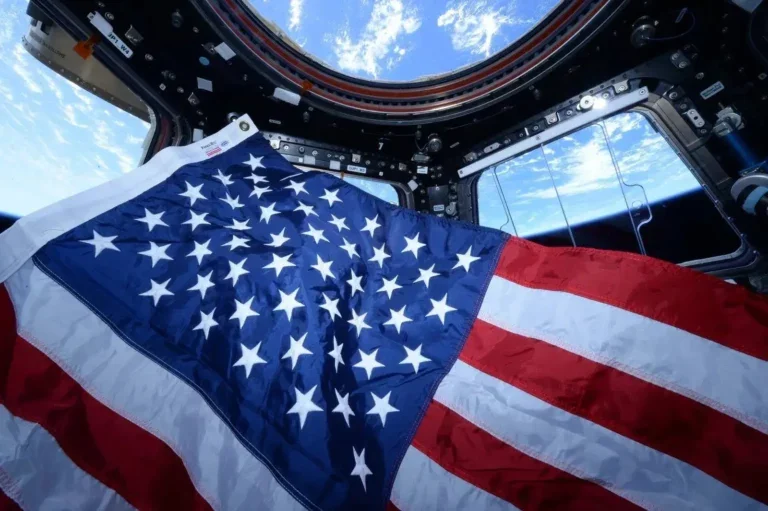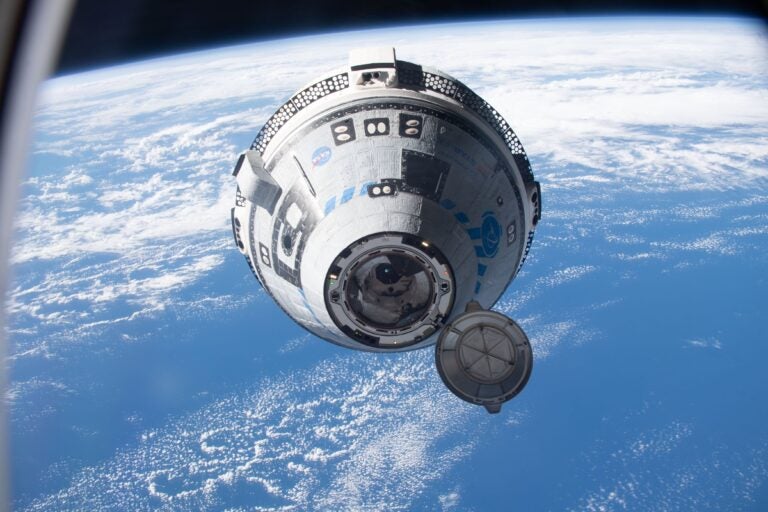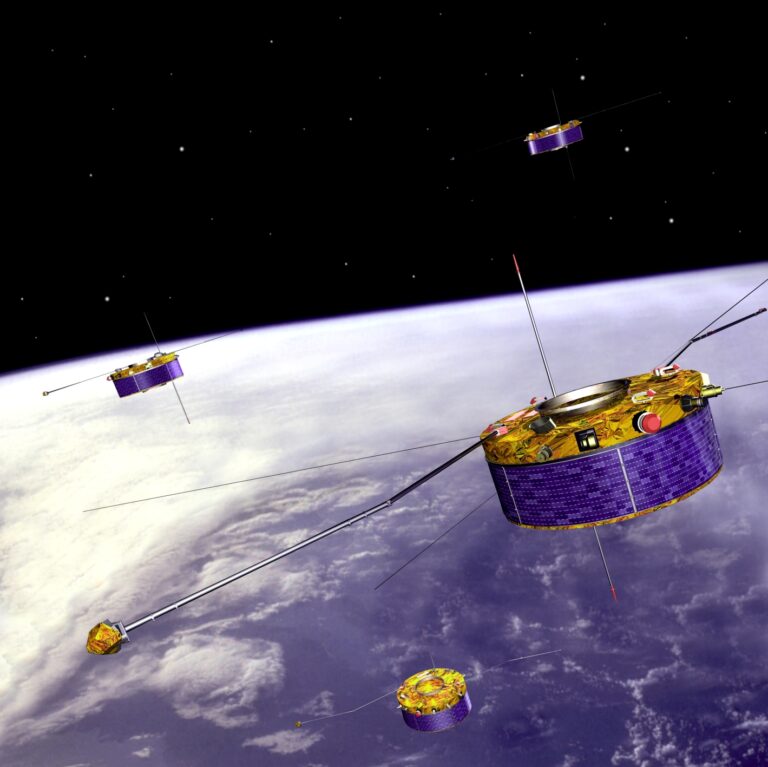Space shuttle Discovery fired up its engines and roared into the sky over a crowd of cheering space enthusiasts and reporters July 26, restoring an American icon and national pride two-and-a-half years after the tragic Columbia accident. This successful launch marks the shuttle fleet’s return to operation and a new journey of exploration to the Moon, Mars, and beyond.
At approximately 6:50 A.M. EDT Tuesday, Discovery’s team of seven, led by Shuttle Commander Eileen Collins, exited the Operations and Checkout building and, with a glow of excitement, waved to the applauding crowd. The crew entered what is dubbed the “AstroVan” and started the 7-mile trek to launch pad 39B. They were protected by an entourage of Kennedy Space Center SWAT team members, armored cars, and an armed helicopter.
Discovery was scheduled for liftoff at 10:39 A.M. EDT and, by that morning, all systems were good to go. The last return-to-flight attempt July 13 resulted in a scrubbed launch because the No. 2 low-level hydrogen engine-cutoff sensor failed to switch from “wet” to “dry” during a test. Tuesday, after fueling began, engineers tested the sensors throughout the countdown. “All eight of the sensors performed as expected” said Martin Jensen, a spokesman for NASA’s Marshall Space Flight Center.
The first day of the 12-day mission will be spent traveling to ISS, some 225 miles above Earth. During that time, the crew will use Discovery’s robotic arm to inspect the vehicle’s exterior and monitor the shuttle’s thermal protection system. Video and imagery captured during the ascent to orbit will allow NASA to monitor any “debris events.”
The external-tank camera took never-before-seen pictures underneath the shuttle as the two separated. A small fragment of tile fell from the near the forward landing gear on the orbiter’s underside during ascent, and, when the solid rocket boosters fell away, an additional unidentified piece of material fell from the tank. “The radar guys are working very hard to see that piece of tile, if that’s what it is, as it departs the vehicle,” said John Shannon, the manager of space shuttle operations. Discovery is scheduled to dock with the International Space Station (ISS) at 7:18 A.M. EDT Thursday to conduct a re-supply and repair mission.
Collins is the only female astronaut to serve as shuttle commander. STS-114, “Return to Flight,” is her second mission as commander. Weeks before the mission, Collins commented, “It’s hard to wait. I’m so excited.” In fact, she said, the opportunity to visit ISS is why she decided to keep flying at a point in her career when many astronauts retire from space flight. “I had never gone to the station, and I really wanted to go to there. I really wanted to be part of the station mission.”
At the end of the missions first day, Collins delivered a message via radio: “As our crew looks back at our beautiful planet and then outwards toward the unknown of space, we feel the importance, today more than any time, of space exploration to all those who are living on Earth. Our flight is the next flight of many in the human exploration of the universe.”

